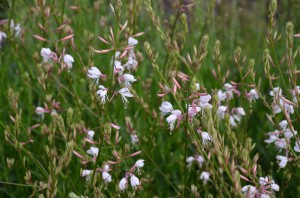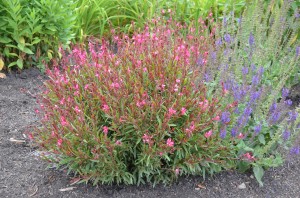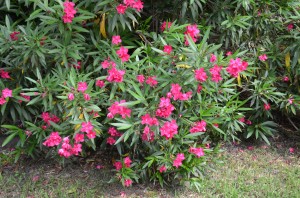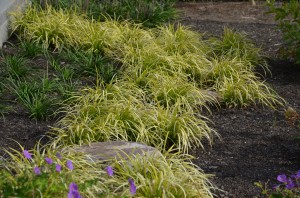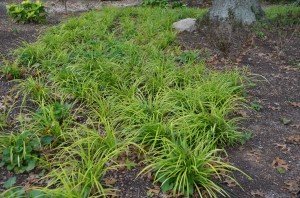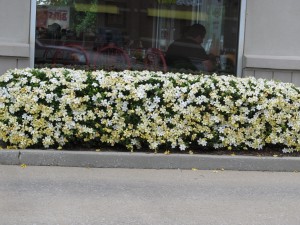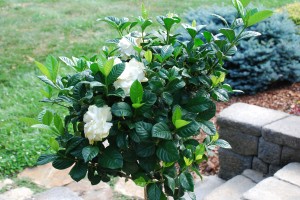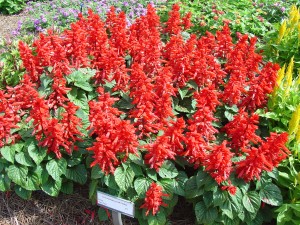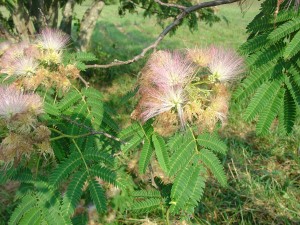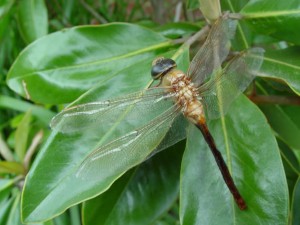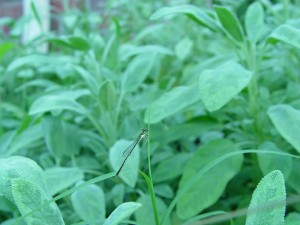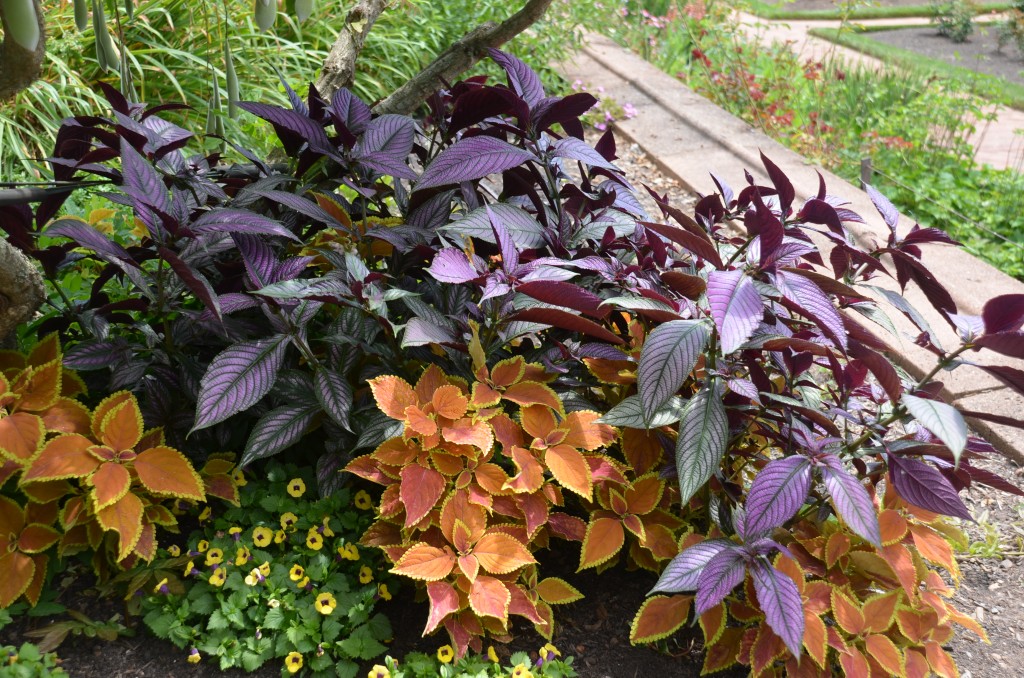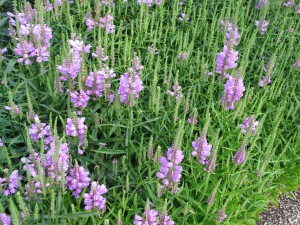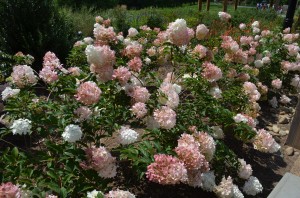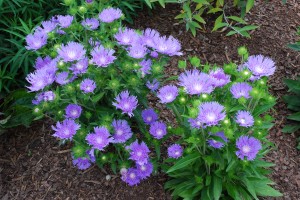What first catches your eye about perennial gaura (Gaura lindheimeri) is its light airy white (or pink) flowers (USDA hardiness zones 5 -9). Orchid-like blossoms are perched atop long thin stems. A faint breeze makes flowers flutter like a cloud of small butterflies above the dark green foliage. Also called wandflower, this Texas native is exceptionally heat and drought tolerant.
Don’t let its delicate appearance fool you. Many plant shoppers may pass it by at garden centers in the spring. It blooms non-stop all three growing seasons. Gaura is easy to grow and very low maintenance. Use it to edge a perennial or annual flower bed or group 3 or more in a rock garden or a container. Autumn foliage takes on a maroon tint.
New white and pink blooming cultivars continue to arrive at local garden centers. Most (not all) cultivars grow 2 ½ to 4 feet high. Among the best:
‘Whirling Butterflies’ has loose sprays of white flowers, lightly pink tinged.
‘Siskiyou Pink’ is a smaller cultivar; spring flowers start out pale pink and darken later in the summer.
‘Crimson Butterflies’ is a compact cultivar with dark red-pink blooms.
‘Ballerina Blush’ (pale pink blooms) and ‘Ballerina Rose’ (rose pink) grow only 12 – 18 inches tall.
Gaura does not always overwinter reliably. Good soil drainage is a must! Plants do not like soggy ground in winter. Gaura has a long taproot system, so is very drought tolerant. Its fertilizer needs are minimal.
Gaura rarely is troubled by disease or insect problems; leaf spots and powdery mildew may pop up if summer weather is exceptionally wet or plants are over-irrigated.

